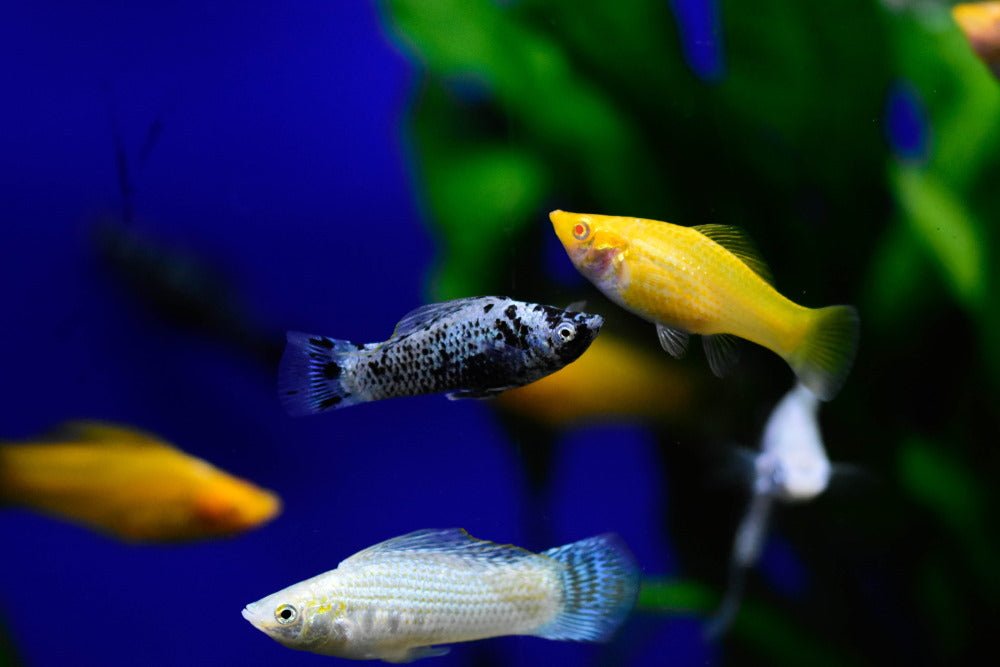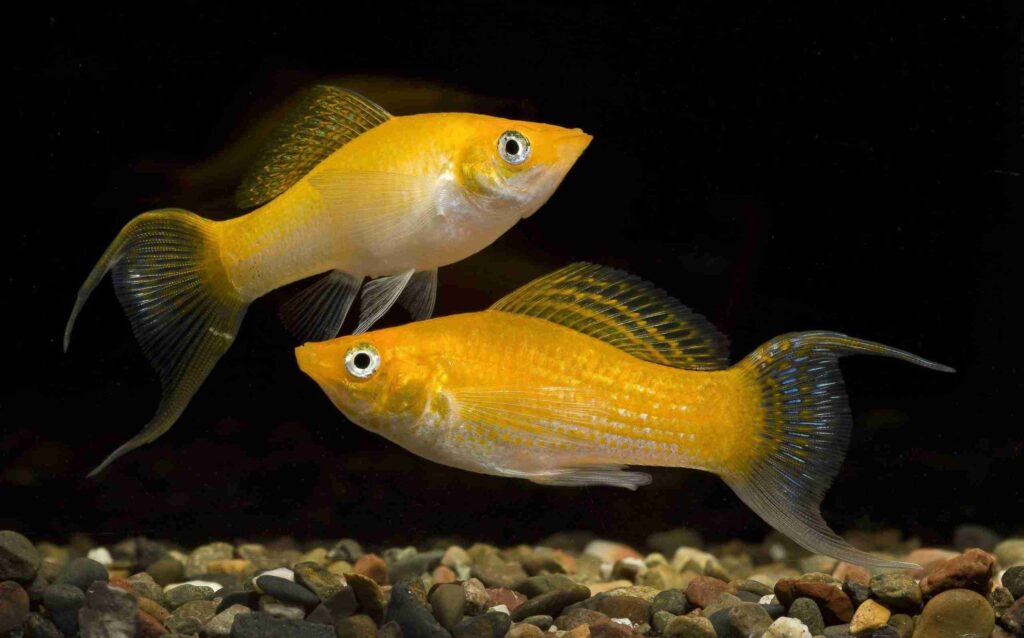Molly fish are popular pets for many people. They come from Central America. Their scientific name is Poecilia sphenops. Many people call them Mexican mollies or just mollies. They live in fresh water and are easy to care for.
What Makes Mollies Special?
Mollies are small and colorful fish. They can grow up to 4 inches. They live happily in home aquariums. Mollies are peaceful fish. They do well with other fish. They can have babies without eggs. This means they are livebearers.
Setting Up the Tank for Mollies
To keep mollies healthy, you need a good tank setup. Here are some important things to remember:
| Requirement | Details |
|---|---|
| Tank Size | At least 20 gallons for a small group of mollies. |
| Water Temperature | Keep water between 72°F and 78°F (22°C-26°C). |
| Water pH | Neutral to slightly alkaline, around 7.0 to 8.0. |
| Filtration | Use a good filter to keep water clean. |
| Lighting | Standard aquarium lighting works well. |
| Decorations | Plants and hiding spots help mollies feel safe. |
Water Quality Is Very Important
Mollies produce waste that can dirty the water quickly. A good filter is a must. Change 25% of the water every week. This keeps the tank clean and fish healthy. Avoid sudden changes in water. Stability helps fish stay strong.
Feeding Your Molly Fish
Mollies eat many kinds of food. Give them a mix for best health. Here are some food types to use:
- High-quality flake food for livebearers
- Frozen or live foods like brine shrimp and daphnia
- Vegetables such as blanched spinach or zucchini
Feed them small amounts two to three times a day. Do not overfeed. Leftover food can pollute the tank.

Credit: www.aquariumcoop.com
Choosing Tank Mates for Mollies
Mollies are peaceful and can live with many fish. But some fish may bully them. Avoid very small or very aggressive fish. Also, do not mix mollies with fish needing soft or acidic water. Mollies like harder, alkaline water.
Good tank mates include:
- Platies
- Guppies
- Corydoras catfish
- Snails and shrimp
Understanding the Salt Myth
Some people add salt to molly tanks. They think it helps fish health. But salt is not always needed. Good tank care is more important. This means:
- Regular water changes
- Good aeration
- Proper filtration
Salt can hide poor water conditions. It should not replace good care. If you use salt, do it carefully and in small amounts.

Credit: www.aquariumcoop.com
Breeding Mollies
Mollies are livebearers. They give birth to live babies called fry. If you have males and females together, expect fry soon. Mollies can have many babies at once.
Fry are very small and can be eaten by adult fish. You may need a separate tank for fry. In this tank, feed them tiny foods like infusoria. This helps fry grow strong and healthy.
Common Health Problems and How to Avoid Them
Mollies are hardy fish but can get sick. Watch for signs like:
- Loss of appetite
- White spots on body or fins
- Slow swimming or hiding
- Clamped fins
Keep water clean and stable to avoid sickness. Quarantine new fish before adding them. This prevents disease spread.
Quick Tips for Molly Care Success
- Keep tank water stable and clean.
- Feed a varied diet in small amounts.
- Provide good hiding spots and plants.
- Choose peaceful tank mates.
- Watch for signs of illness daily.
- Prepare for baby mollies if males and females live together.
Why Mollies Are Good for Beginners
Mollies are a great choice for new fish owners. They are easy to care for. They live well in community tanks. Mollies tolerate a range of water conditions. They also come in many colors and patterns. This makes them fun to watch.
With a little care, mollies can live for 3 to 5 years. Their bright colors and lively behavior add joy to any home.
Summary
Molly fish are peaceful, colorful, and easy to keep. They need a clean tank with good filtration. Feed them varied food and watch their health. Avoid mixing with aggressive fish. Be ready for baby mollies if you keep males and females together. Good tank care is the key to success. Mollies bring life and color to your aquarium.
Frequently Asked Questions
Are Molly Fish Easy To Take Care Of?
Yes, molly fish are easy to care for with stable water, good filtration, varied diet, and peaceful tank mates.
How To Take Care Of Molly?
Maintain clean, well-filtered water with stable parameters for mollies. Feed a varied diet of flakes and livebearer-appropriate foods. Provide peaceful tank mates and avoid aggressive species. Use standard aquarium lighting. Prepare for frequent breeding by separating fry to ensure their survival.
How Do I Tell If My Molly Is Stressed?
Signs your molly is stressed include hiding, rapid gill movement, loss of appetite, erratic swimming, and faded colors. Keep water stable and clean to reduce stress.
How Many Mollies Should Be Kept Together?
Keep at least 3 to 6 mollies together for a healthy social group. Avoid overcrowding to reduce stress. Maintain proper tank size and water conditions for best results.
What Is The Ideal Tank Size For Molly Fish?
A 20-gallon tank is best for a small group of mollies to swim comfortably.
How Often Should I Clean A Molly Fish Tank?
Clean the tank and change 25% of water weekly to keep mollies healthy.
What Do Molly Fish Eat In Captivity?
Feed mollies flakes, pellets, and occasional vegetables for a balanced diet.
Can Molly Fish Live With Other Fish Species?
Mollies are peaceful but avoid mixing with aggressive or very small fish.

